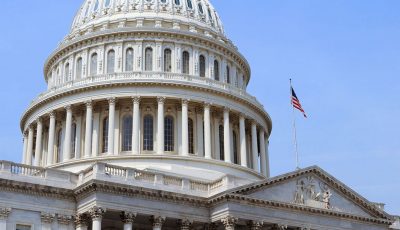EPA: It’s time for a CUC accounting
DOJ counsel wants CUC to provide information on funding under oath
The U.S. Environmental Protection Agency believes it is time to conduct a full accounting of funds or potential funds of some Commonwealth Utilities Corp. projects.
EPA, through U.S. Department of Justice Environmental Enforcement Section senior attorney Bradley R. O’Brien, stated that the accounting request is not an academic exercise but a reckoning that is necessary to reveal the extent of the funding that will be available to the Engineering and Environmental Management Company, which is necessary for EEMC’s future planning, and CUC’s attempt to shift funding responsibilities to the detriment of the EEMC and to the benefit of CUC.
“The United States is not accusing CUC of improprieties, but believes that a full financial accounting, firm financial and project commitments, plainly stated contract intentions, a description of ongoing CUC disputes, and public disclosure is imperative,” said O’Brien.
U.S. District Court for the NMI designated judge David O. Carter recently selected Gilbane Federal, a California-based full service construction company, as EEMC, which will have the power to expeditiously complete some stalled CUC projects.
O’Brien asserted that it is important that the court require CUC to fully inform the court and the parties of current and past project funding, available project funds, contracting issues, the extent to which funding will be earmarked or transferred to the EEMC, and CUC’s intentions regarding current and past contracts that CUC seeks to potentially transfer to the EEMC.
“It is time for a CUC accounting,” he pointed out.
O’Brien specifically asked the court to order CUC to provide information, under oath, for each of the Stipulated Order 2 projects.
SO2 refers to court-mandated CUC projects that include the CUC pipeline; tank erection cleanout and testing; secondary containment; and used oil disposal, and others.
O’Brien said in light of the federal funding implications and the insufficient information that has been previously provided, providing the information under oath is appropriate.
O’Brien requested for an accounting of all SO2 funding or potential funding (whether federal funding or CUC and CNMI funding) for each of the past, current, and future SO2 projects.
He requested for information regarding the extent to which funding is available for each of the past, current, and future SO2 projects.
To ensure complete and accurate grant funding information, he said it is important to clarify whether the grant funding is “obligated” or “unobligated” and the extent to which the funds have been spent, invoiced, not invoiced but spent, or expected to be spent.
O’Brien said much of the funding information was provided verbally by CUC to the U.S. government.
He disclosed that, on Dec. 10, 2014, CUC submitted the required grant status report for SO2 projects as of Nov. 30, 2014.
“The grant status report is not up to date and does not clearly delineate grant funding obligations and payments, thereby hampering EPA’s ability to discern available grant monies and funds obligated or earmarked to contracts or projects,” the counsel said.
On the Tank 102 project, O’Brien said their response describes CUC’s apparent intention to transfer the project construction to the EEMC at the EEMC’s sole expense—and to shift to CUC approximately $1.5 million in combined grant and CUC funding currently earmarked for the project contracts.
“Notably, CUC’s reply is silent on this point, a silence that needs unambiguous clarification as requested by the United States,” he said.
On the CUC pipeline project, O’Brien said CUC must be required to fully account for the project’s funds and to state whether CUC intends to support the EEMC’s use of these funds.
He cited that CUC’s grant status report states that there remains only $195,649 in unobligated grant funding for the project.
“However, CUC does not account for approximately $1.682 million that EPA was informed was released from the Smithbridge of Guam contract—a total of $1.877 million that should be available in unobligated grant funding,” O’Brien said.
He said CUC may have made a payment to Smithbridge to resolve the CUC/Smithbridge contract dispute.
“If so, CUC should specify the extent to which additional payments were made to Smithbridge and the extent to which grant funding was used for this payment and the funding now available for the CUC pipeline,” he said.
O’Brien said that, on Oct. 23, 2013, the court ordered CUC to establish an $866,000 CUC pipeline contingency fund. While the contingency fund may have been fully funded originally, EPA has been informed that CUC has withdrawn funds from this account, possibly for non-CUC pipeline activities, he said.
“A full accounting of these funds is needed, with a firm CUC commitment that all CUC pipeline funding will be available to the EEMC,” O’Brien said.
On miscellaneous grant funding, O’Brien said in addition to the $1.17 million in grant funding currently obligated to the CUC pipeline and Tank 102, there is $1.962 million in grant funding that is associated with SO2 projects but is either not obligated to specific contracts or obligated but not spent and can be used for SO2 projects.
CUC and EPA are in disagreement over EPA’s role over the implementation of identified CUC projects with the selection of the EEMC.
CUC, through counsel James S. Sirok, stated that under the provisions of the EEMC order, CUC believes that the EPA does not have the authority to micromanage the SO2 projects and SO2 project management responsibilities of the EEMC.
Last September, Carter approved a settlement agreement entered by EPA, CUC, and the CNMI government that will require the CNMI government to, among other things, deposit over $22.8 million until 2018 to complete some stalled CUC projects.



























